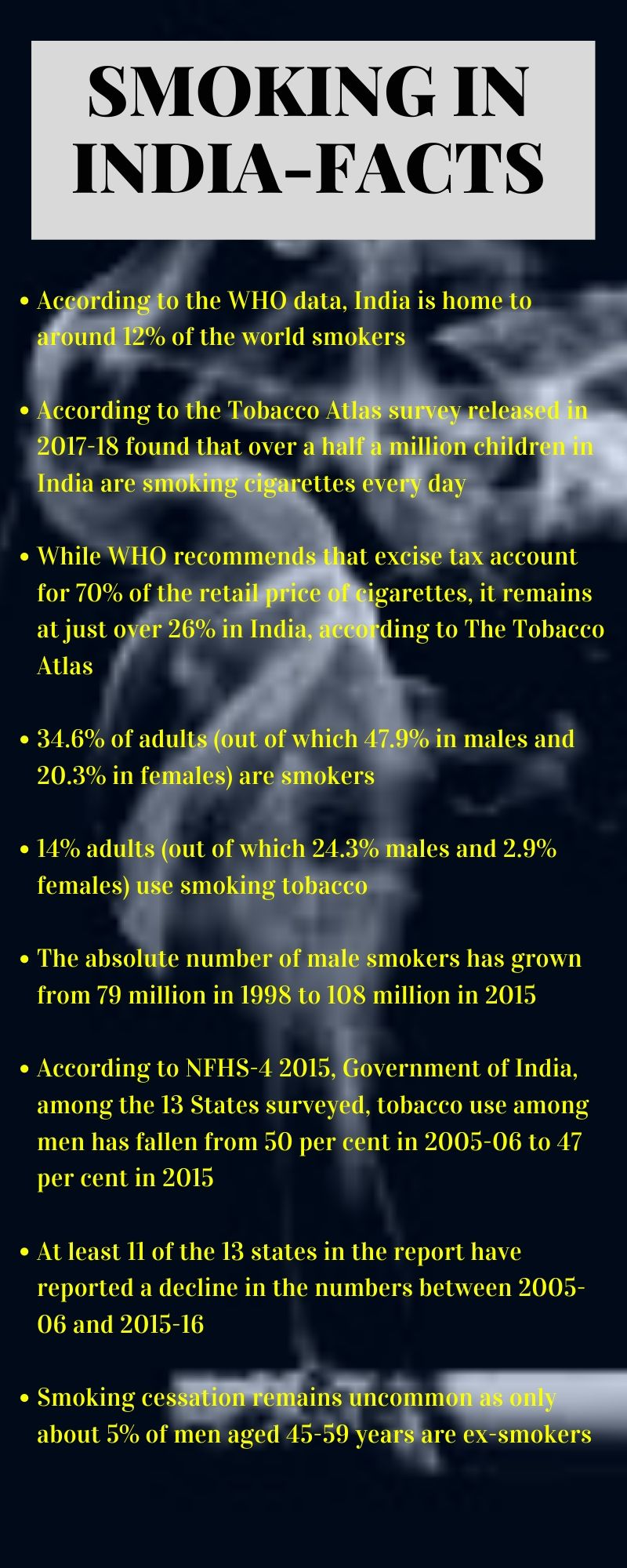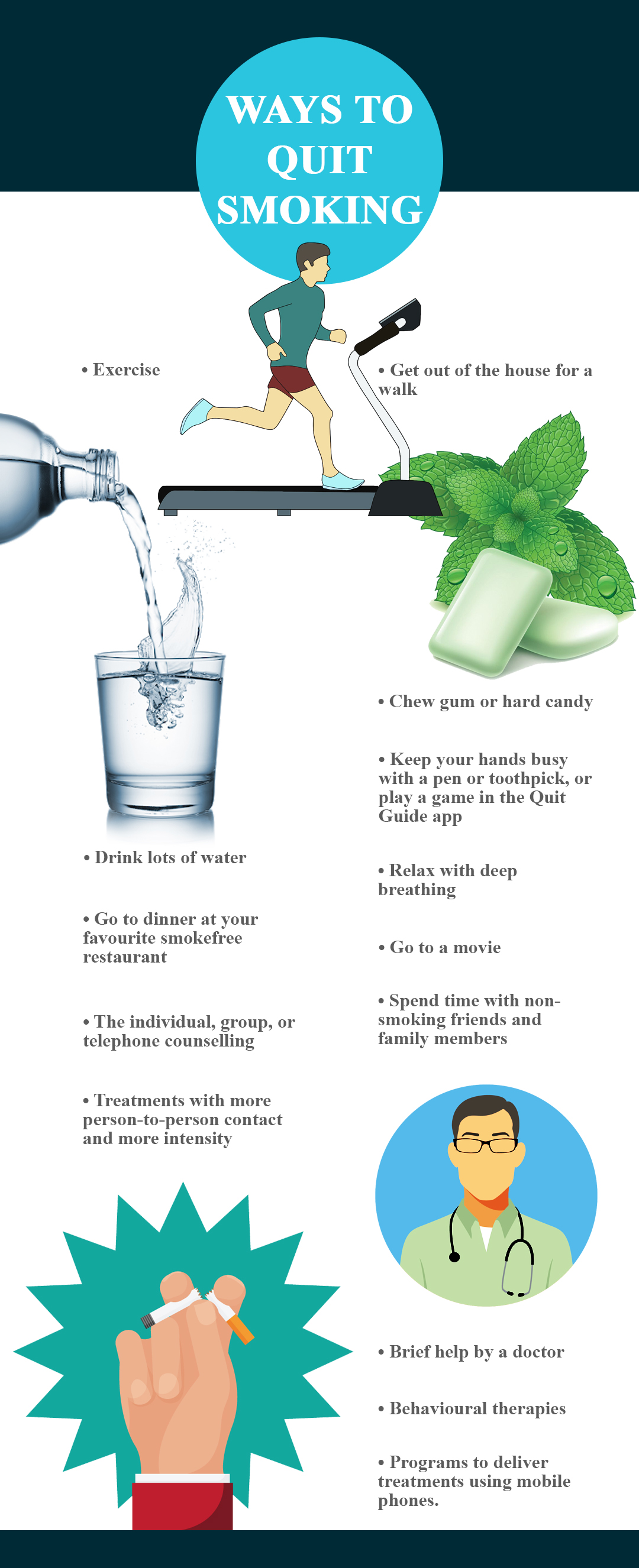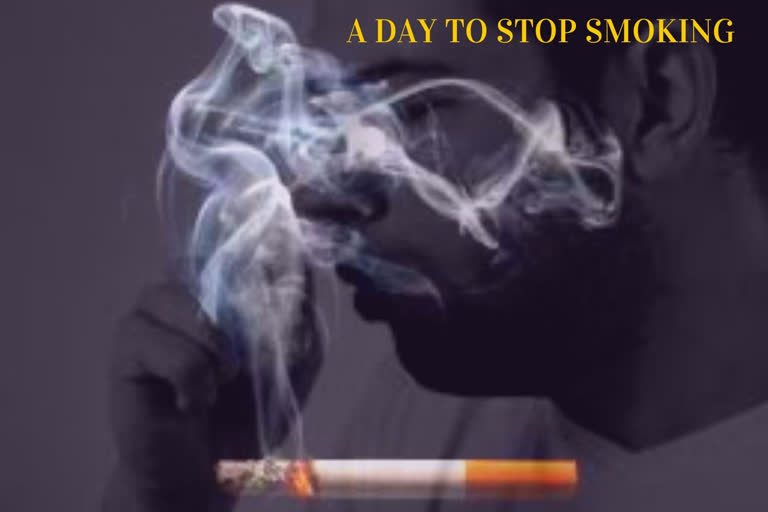Hyderabad: "Calm down, take a deep breath", is something the health specialist recommends for good health, but if one inhales smoke instead of fresh air while breathing, then there is no chance to get good health. Day by day the number of smokers is increasing as people want "a little joy" in their lives. Though it's also true that some of them are struggling to get read of this "little enjoyment". For those strugglers, a day is specially dedicated and that day is No Smoking Day.
Also read: Heated tobacco devices equally harmful as e-cigarettes, smoking: Study
No Smoking Day is celebrated every year on the second Wednesday of March to help smokers who want to quit smoking and also to raise awareness about the health effects of smoking in daily life. The main objectives of the day are to spread and educate people about the impacts of tobacco through the cigarette and various other modes. This year the No Smoking Day is celebrated on March 11.
Origin of the No Smoking Day
The origin of observing No Smoking Day lies in the United Kingdom. The No Smoking Day awareness movement was first started in 1984 on the day of Ash Wednesday- a holy Christian day where people fast and pray and since then it has been an annual celebration event and try to save people from the harmful effects of smoking.
The aim behind the celebration of No smoking Day is to help people to quit smoking forever.
According to the researchers, this effort has proven very effective and was observed that at least one among the ten people has been observed to give up smoking on this day.
Why smoking: In Indian Context

• According to the World Health Organization (WHO) data, India is home to around 12% of the world smokers.
• The survey conducted by Assocham Social Development Foundation among 2,000 women in the age group of 22-30 years in Ahmedabad, Bengaluru, Chennai, Delhi-NCR (National Capital Region), Hyderabad, Jaipur, Kolkata, Lucknow, Mumbai and Pune.
• According to the Tobacco Atlas survey released in 2017-18 found that over a half a million children in India are smoking cigarettes every day.
• While the World Health Organization recommends that excise tax account for 70% of the retail price of cigarettes, it remains at just over 26% in India, according to The Tobacco Atlas.
• 34.6% of adults (out of which 47.9% in males and 20.3% in females) are smokers
• 14% adults (out of which 24.3% males and 2.9% females) use smoking tobacco
• The absolute number of male smokers has grown from 79 million in 1998 to 108 million in 2015
• According to the National Family Health Survey (NFHS-4) 2015, Government of India, among the 13 States surveyed, tobacco use among men has fallen from 50 per cent in 2005-06 to 47 per cent in 2015. At least 11 of the 13 states in the report have reported a decline in the numbers between 2005-06 and 2015-16.
• Smoking cessation remains uncommon as only about 5% of men aged 45-59 years are ex-smokers.
Quit Smoking, How?
Quitting smoking at any age will result in major and immediate health benefits. This applies to people with and without diseases caused by smoking.
Quitting smoking reduces the risk of stroke and heart attack.
This is especially important for women who smoke and take the contraceptive pill: their risk of death from a heart attack increases dramatically with age.
After quitting, the sense of taste and smell begin to improve. Bad breath, hair fall and stinking of clothes will reduce.
After 4 weeks of quitting smoking, doing regular exercise get easier because more air is getting into the lungs.
Within 4 to 6 days of quitting, the cilia (the hair-like cleaning system in your lungs) begin to recover and remove the mucus in the lungs so that the person can cough it up. The mucus may be brown from tar.
Quitting reduces the risk of lung cancer if the person does no affected already by the disease. After 10 years, the risk is halved.
After 8 weeks without smoking, the immune system started improving.
After 12 months of quitting smoking, the increased risk of heart disease goes down to almost half.
Ways to Quit Smoking

• Exercise.
• Get out of the house for a walk.
• Chew gum or hard candy.
• Keep your hands busy with a pen or toothpick, or play a game in the Quit Guide app.
• Drink lots of water.
• Relax with deep breathing.
• Go to a movie.
• Spend time with non-smoking friends and family members.
• Go to dinner at your favourite smokefree restaurant.
• Brief help by a doctor (such as when a doctor takes 10 minutes or less to give a patient advice
and assistance about quitting)
• The individual, group, or telephone counselling
• Behavioural therapies (such as training in problem-solving)
• Treatments with more person-to-person contact and more intensity (such as more or longer
counselling sessions)
• Programs to deliver treatments using mobile phones.
The Non-Financial Costs Of Smoking
Apart from the monetary loss of over Rs 1 crore, a smoker will pay the following penalty as well.
• Family suffers
The biggest price is the health of one's family. Studies show that children who live with a smoker or have exposure to tobacco smoke inside the home are more likely to fall ill.
• Shortened life
Smokers have shorter lives. According to one estimate, every cigarette one consumes shortens his/her life by about 12 minutes. Five cigarettes can reduce life by an hour.
• Career prospects
Poor health means poor performance in the workplace. A company may want to promote an energetic person rather than someone who calls in sick very often.
• Quality of life
Poor health could significantly curtail the quality of life, preventing one from undertaking strenuous physical activities.
Alternatives to smoking
Medical science offers several alternatives to smoking. Here’s how they work and how much they cost.
• Nicotine-based chewing gum: Rs 50-3,000
When chewed, it releases nicotine, which is absorbed in the bloodstream and stems urge to smoke.
• Nicotine patches: Rs 600
When placed on the skin, they release nicotine into the bloodstream, thereby abating withdrawal symptoms.
• Ayurvedic formula: Rs 550
detoxing the body and improves blood circulation and digestion, impeding the need to smoke.
• Bupropion hydrochloride pills: Rs 150
This OTC drug affects neurotransmitters in the brain and curbs the urge to smoke.
Harmful effects of smoking
Researchers say that people who smoke five cigarettes a day are doing almost as much damage to their lungs as people who smoke 30 cigarettes a day.
Researchers say it takes “light” smokers about 1 year to develop as much lung damage as “heavy” smoking does in 9 months.
They also note that a lighted cigarette releases 7,000 chemicals, 69 of which are considered to be cancer-causing substances.
A 30-year-old who smokes five cigarettes a day would lose more than Rs 1 crore by the time he retires at 60.
Government actions required to promote “quit smoking”
• Incorporate information about the harms of tobacco and benefits of smoke-free environments in your Council E-newsletter, website and other communications to raise awareness among your staff, Councilors and community members.
• Utilize the No Smoking Day (11 March) and other health-related key dates as an opportunity to raise awareness of harms of smoking and promote specific smoke-free events within your staff, Councilors and community members through Community Development and Art programs.
Also read: Crisis-hit Cong to shift its MLAs out of Madhya Pradesh
• Department of Health to conduct periodical monitoring and enforcement of the legislation that prohibits sales to minors within your Local Government area. When retailers are found to be selling tobacco to minors, recommend the Department of Health to cancel the license.



